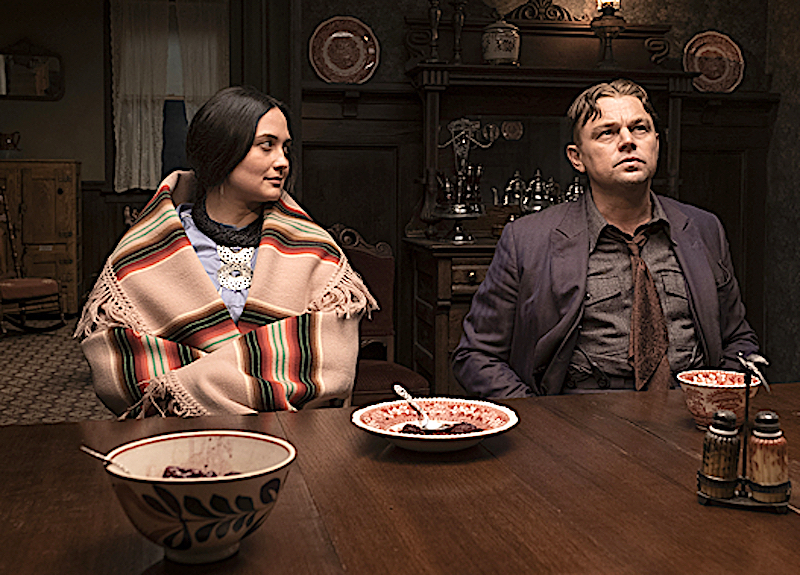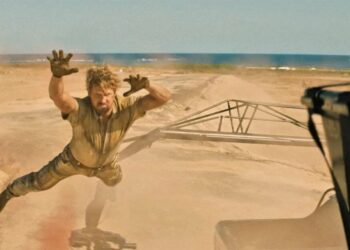In his continued exploration of greed, corruption and moral decay, Martin Scorsese doesn’t play it safe in Killers of the Flower Moon, his latest, which opens in theaters this Friday for a limited run before premiering on Apple TV, likely early next year. Although he touched on similar themes in Casino, The Wolf of Wall Street and The Irishman, Scorsese shoots straight for the heart in his latest, depicting our country’s original sin: the genocide of the Native Americans. The 80-year-old filmmaker still employs his signature trademarks including a propulsive narrative, lashings of intense violence, and mesmerizing dives into the mechanics of crime. This time, however, his approach has a psychological depth and curiosity that feels fresh.
Based on David Grann’s book of the same name, the movie tells the story of the systematic murders of Osage Native Americans in 1920s Oklahoma. Even with its three-hour-plus running time and a $200 million budget, the film flies by and keeps you completely engaged as Scorsese places the criminals and their victims on the same blighted stage– a departure for the director and a new lease on his artistic vision.
Welcome to Fairfax, Oklahoma, a mud-splattered, shaggy boomtown bustling with Moonshine bootleggers, drunken cowpokes and toothless criminals (literally and figuratively). Wealthy Osage Native Americans who recently struck it rich after oil deposits were discovered on their land live alongside these “respectable citizens,” driven around town by chauffeurs or dining at fancy restaurants. But they are also dying at an alarming rate. Some die due to “disease” (aka poison), while others have “accidental” falls in the mountains, or by questionable suicides. Osage tribal members demand an investigation into these untimely deaths, but the white patriarchs ignore their pleas for justice and suspicion hovers over Fairfax like a black mist.
Our guide into this murky world is Ernest Burkhart (Leonardo DiCaprio), a…
Read the full article here







